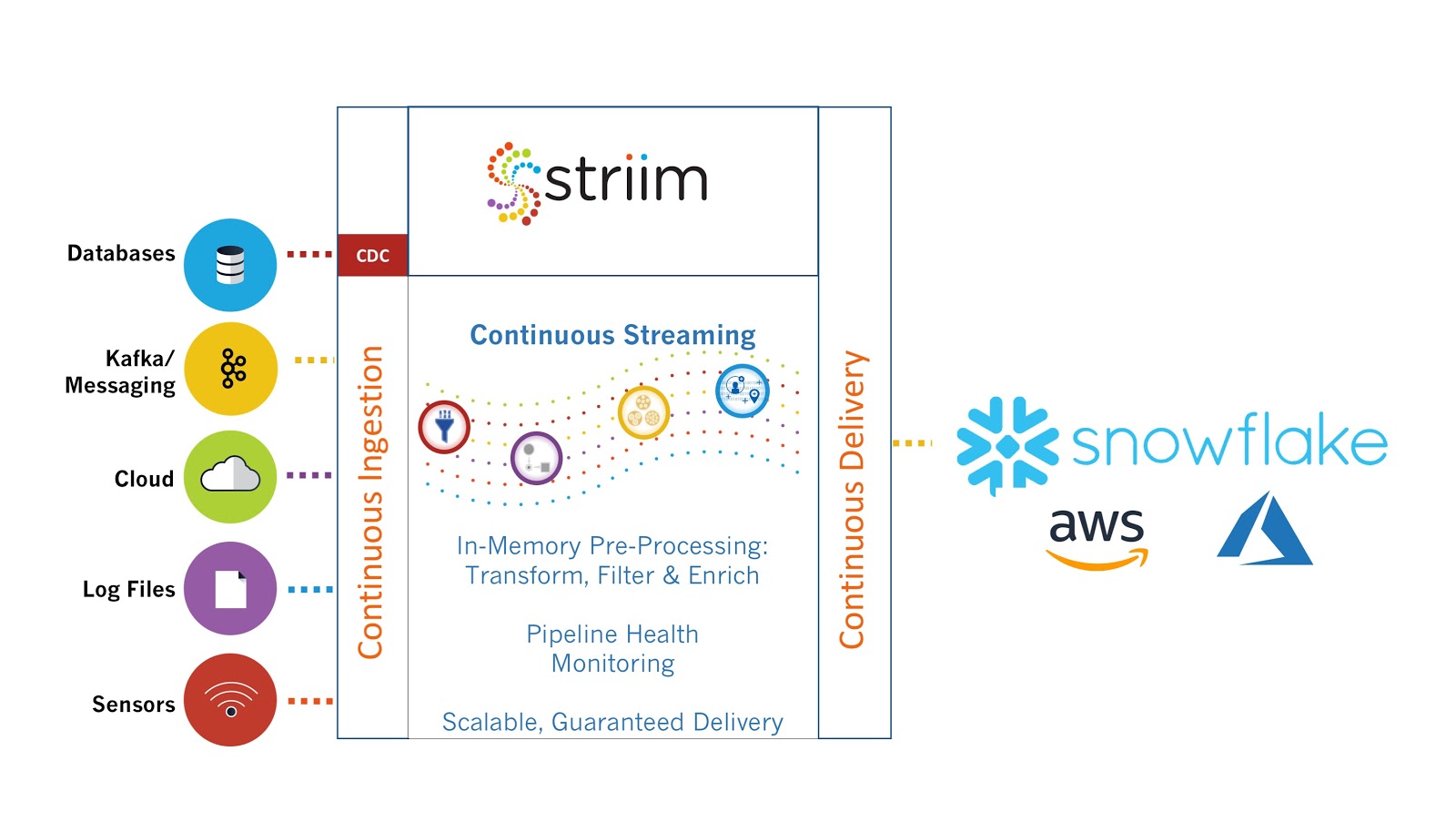If you have Snowflake or are considering it, now is the time to think about your ETL for Snowflake. This blog post describes the advantages of real-time ETL and how it increases the value gained from Snowflake implementations.
With instant elasticity, high-performance, and secure data sharing across multiple clouds, Snowflake has become highly in-demand for its cloud-based data warehouse offering. As organizations adopt Snowflake for business-critical workloads, they also need to look for a modern data integration approach. A streaming ETL for Snowflake approach loads data to Snowflake from diverse sources – such as transactional databases, security systems’ logs, and IoT sensors/devices – in real time, while simultaneously meeting scalability, latency, security, and reliability requirements.
Striim offers an out-of-the-box adapter for Snowflake to stream real-time data from enterprise databases (using low-impact change data capture), log files from security devices and other systems, IoT sensors and devices, messaging systems, and Hadoop solutions, and provide in-flight transformation capabilities. With built-in HA, security, reliability, and scalability features, Striim makes it easy for Snowflake customers to seamlessly adopt a modern, enterprise data warehouse that uses up-to-date data and supports operational decision making.
There are several advantages of using a streaming data integration solution such as Striim to enable real-time ETL for Snowflake. Here are the Top 5:
- Using Striim’s real-time data synchronization capabilities, businesses have the option to implement a phased migration to Snowflake from existing on-prem or cloud-based data warehouses. As such, there is no downtime for the legacy environment, and risks are minimized by allowing for extensive testing of the new Snowflake environment.
- When combined with low-impact CDC, real-time ETL turns enterprise databases into a streaming source of critical business transactions, enabling richer business insights. In addition to log files, sensors, and messaging systems, Striim continuously ingests real-time data from cloud-based or on-premises data warehouses and databases such as Oracle, Oracle Exadata, Teradata, Netezza, Amazon Redshift, SQL Server, HPE NonStop, MongoDB, and MySQL.
- Real-time ETL enables low-latency data for time-sensitive analytics use cases, such as detecting and predicting security threats instantaneously, enabling location-based marketing etc. that provide significant operational value to the business.
- Before loading the data to Snowflake with sub-second latency, Striim allows users to perform in-line transformations, including denormalization, filtering, enrichment and masking, using a SQL-based language. In-flight data processing reduces the time needed for data preparation as it delivers the data in a consumable form.
- In-flight transformation also enables a simplified and scalable data architecture that has many related benefits including:
- Minimizing ETL workloads by performing transformations while data is in motion
- Optimizing data storage by filtering out unnecessary data
- Enabling end-to-end recoverability and full resiliency without needing to handle many different components and network hops across these components
- Supporting compliance with privacy-related regulations by enabling data masking before delivery
Striim runs on both AWS and Azure, and enables easy deployment and fast time-to-market for real-time ETL to Snowflake with its wizards-based, drag-and-drop UI.
I invite you to learn more about how Striim supports Real-Time ETL for Snowflake by visiting our Striim for Snowflake solution page, schedule a demo with a Striim technologist, or download the Striim platform to get started!























